The Article
ASTELL + KERN + MOD=RED WINE AUDIO
1st January 2015
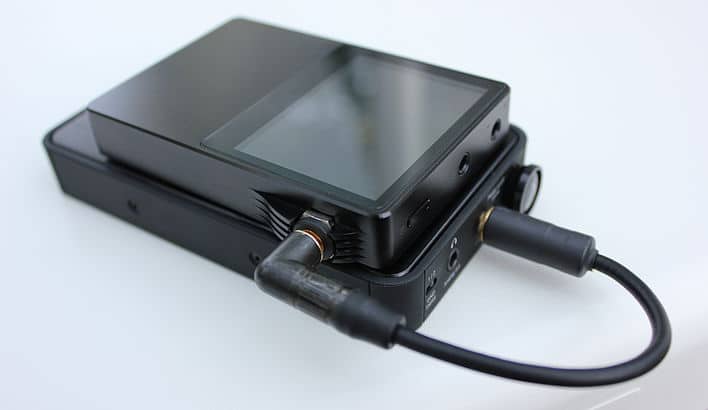
How to improve upon perfection? Paul Rigby talks to Red Wine Audio and reviews its Astell & Kern AK120 modification, the RWAK120/S
Designing and manufacturing home audio electronics and ‘head-fi’ equipment (that is, gear for those interested in high quality mobile and headphone-oriented hi-fi), Red Wine audio began life producing an audiophile upgrade for Apple’s iPod, know as the iMod.
At that time, the iPod was seen as the best mobile digital player on the market. Now, that crown has been passed to iRiver imprint, Astell & Kern, with its AK100, AK120 and AK240 players with more new hardware flavours promised via the recent announcements at the High End show, which took place between 16-19 May, this year in Munich, Germany.
News of Astell & Kern (A&K) reached the ears of Red Wine Audio boss, Vinnie Rossi and not in praiseworthy terms, “When the original Astell & Kern AK100 was released, people asked me about it. I found that it had a really high output impedance that caused issues for those people using low impedance in-ear phones. As such, the AK100 was causing deviations in the frequency response for these users. I by-passed that to enable IEM users to successfully use the AK100.”
SUPER CLEAN
This was when Rossi began to appreciate the basic value of the Astell & Kern design, “The quality of the internal components and headphone stage was a cut above the rest,” he said “They really went above and beyond the competition. Without adding a lot of extra bolts, they offered a good playtime, a clean interface and had quickly developed a following. This model appealed to me, more than many of the others on the market that are rather clunky or plastic. Internally, I thought that A&K did a clean circuit board layout providing a solid foundation for future modifications. Their output stage is excellent. Even with the stock model, at full output level, the amp doesn’t clip, it’s super clean. Using the most sensitive of IEMs, there is no background noise. Other players have had that problem. I like their two-card expandable slot architecture too. It seemed like a product that was going to take off.”
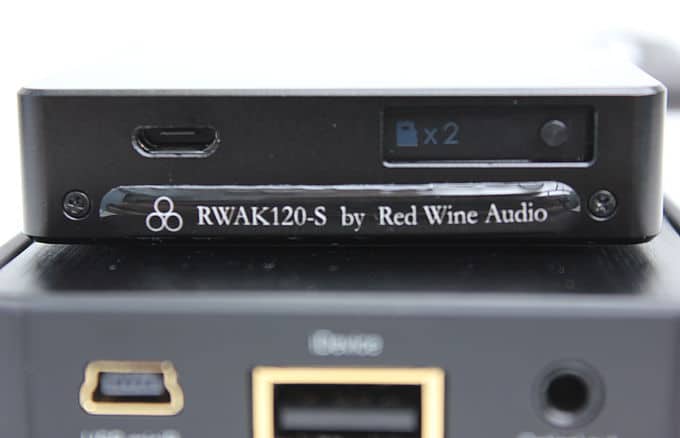
It was the admiration of the design that prompted the birth of several modding ideas. After the initial impedance mod on the smaller and cheaper AK100, Rossi took a look at the more capable and expensive AK120.
“I noticed that the lower motherboard of the AK120 had the DAC chips and the headphone stage and then it had to go to a daughter board holding your output jacks and such,” said Rossi. “I really didn’t want to go through all of that, I wanted to do hard-wiring, right from the output stage using really nice Cardas copper wire.”
This one comment gives you an indication of the quality of the AK120 modification. Cardas produce top-notch cable, much admired by audiophiles the world over. Rossi utilised a spool of fine cable that is not generally available. It’s enamelled without additional insulation so it is of fine gauge and, very important, flexible, “I wanted to bypass the minute circuit traces and connectors that were in the AK120 device. Doing this dropped the output impedance below a single Ohm. The Cardas helped to provide a cleaner signal right to he pins and output jacks, enhancing transparency.
NEW WOLFSONS
Returning to the core of the modding plan, Rossi decided to replace the twin internal Wolfson 8740 DACs with twin 8741 models, he removed the ‘volume’ wheel, situated on the top right of the chassis, and replaced it with a true, high quality, Line Out socket. Next, Rossi tweaked the stock jacks at the top of the chassis. For the RWAK120/S, the Headphone Out became a Line Out (and remains as an optical output). The other socket, next to it, is not touched and remains the optical input Internally. Rossi added a new, high quality, capacitor across the battery rail, “One thing that can be improved upon in portable devices is energy storage for instantaneous peaks in the music where you need more current. Adding the capacitor in the AK120 adds dynamics to the performance, it also adds bass attack and grip.”
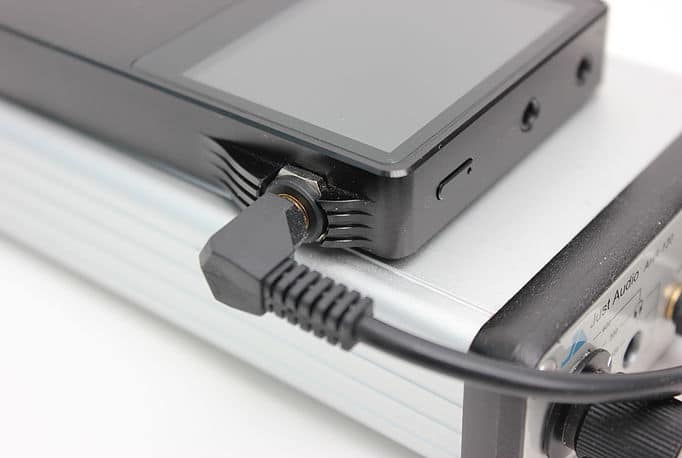
One of the basic modification decisions, while planning the future modification, was to switch the AK120 from its default Software Mode to a new and rather more interesting Hardware Mode.
When you buy an AK120, Software Mode dictates that you utilise the player’s digital volume control. There is an attenuator in the featured Wolfson 8740 DAC chips so that, when you turn the wheel, fixed to the top right of the chassis, the volume increases and decreases.
When you are hardware mode, the volume is effectively ignored because it is set at maximum and left there. This means that you have to plug your own, separate, portable, headphone amplifier into the AK120 and then plug your headphones into that headphone amplifier, to achieve superior Sonics. This is why the ‘volume’ wheel was replaced with a Line Out socket.
Arguably, the most significant change to the basic AK120 landscape was to replace the heart of the mobile player. In fact, to remove one of its principle selling points, the twin Wolfson 8740 DACs, but to replace them with DACs that are considered to be superior, the Wolfson 8741. Why the 8741? “Firstly, using a DAC of another brand would have required so much modification to not make any sense at all, said Rossi. “You’d need a whole new motherboard to begin with. I wanted to use a top-of-the-line Wolfson chip, which is quite a bit more expensive than the standard 8740 (almost three times the price in terms of single chip price). I could have gone for the 8742 but that is a lower cost version of the 8741 and offers a suitably lower performance, in relative terms.”
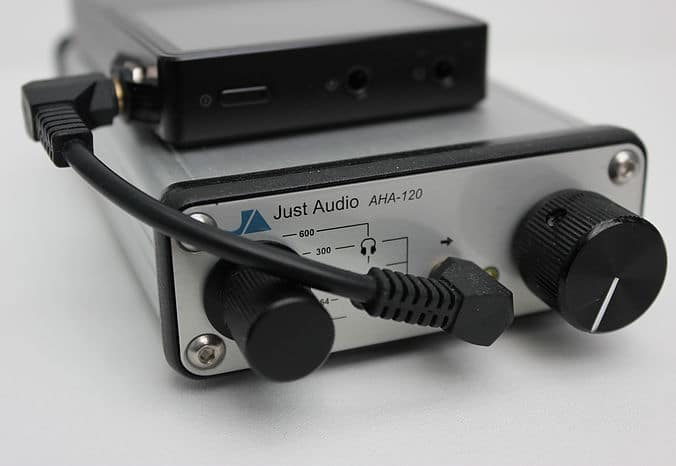
Rossi also chose the 8741 because, “It has a musical quality to it that some of the others, like the Sabre, doesn’t have.”
FILTER FEATURE
The stock DAC has its own footprint. There are 28 pins per DAC chip – and there are two DACs in the AK120 – all of those pins have a designation because they are designed to work with the 8740, “The 8741 is similar. Most of the pins are the same but there are a few differences, which means that the 8741, still the flagship Wolfson DAC, is not a drop-in replacement. One of the special aspects of the DAC is its minimal phase digital filter. Something that the 8740 does not have built into it. This filter removes ‘pre-ringing’. After the impulse, then you get a ring, which is more natural so you don’t add anything that is added before time that can result in an edgy sound output. The result is a smoother, more natural sound,” said Rossi.
The word ‘filter’, at least in this case, should not be looked upon with suspicion. This is not an analogue filter that alters frequencies in the audio band, “With all D/A conversions, nowadays, they are mainly based upon a delta signal modulation. Doing so, they are running at higher frequencies in the audio band. After that digital signal gets converted to analogue there is going to be high frequency noise, out of the audio band, but it’s still riding on that signal and you don’t want to leave it like that. You want to clean that up. You need a digital filter before the D/A conversion process. You also want an analogue output stage that has filtering for the high frequency noise if you want to obtain a clean output. Nothing in the audio band is attenuated or changed. This noise can also cause a lot of problems with certain amplifiers if you have this high frequency noise. It can causes oscillations or at least the noise performance specs will look horrendous if you don’t get rid of it.”

So why haven’t Astell & Kern plumped for the 8741 from the off? Well, there is that cost but the principal reason is the 8741 power demands. It uses more power than the 8740 that means that the AK120 enjoys around 20% less battery life in between charges. This does depend on the type of files utilised, however. Basically, push a lower bit rate digital file through a DAC and you use less power. Hence, 24bit/192kHz processing uses more battery than playing a standard Redbook CD file of 16bit/44.1Mhz, for example.
“We couldn’t fit a larger battery due to restricted space,” said Rossi. “We did consider removing the stock battery and then adding an external battery to replace it, with greater capacity. There are no plans, though because it restricts portability.”
NATIVE DSD
One of the more mysterious aspects of the upgrade is DSD support. The stock AK120 does support DSD but not natively. The data is sent through a PCM conversion process first. The 8741 does, however, support native DSD play, something that first officially appeared with the launch of the rather expensive AK240. Native mode means that the data doesn’t have to be sent via PCM first.
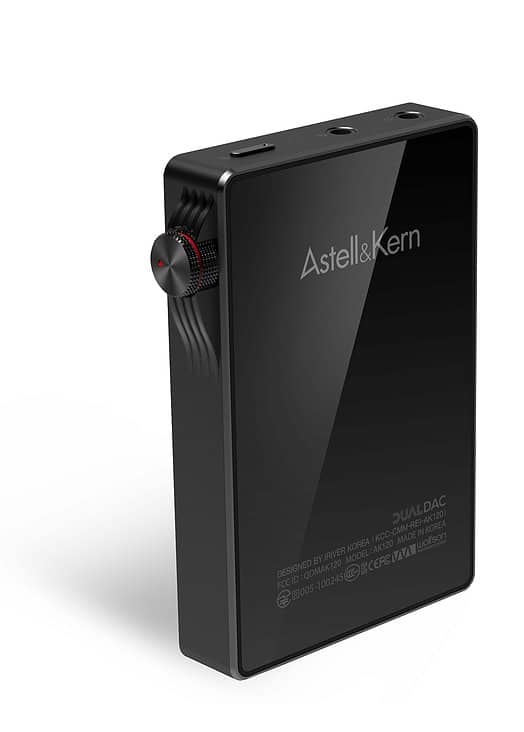
That, unfortunately, doesn’t mean that the Red Wine upgrade allows native DSD play. The AK120’s built-in software has not been upgraded ad does not allow native DSD playback. The native option has to be triggered in software first to make sure that you are processing it properly. Hence, even though the 8741 chip supports native DSD play, the software does not so you cannot use native DSD mode on the modded AK120. As A&K are not likely to provide a software tweak to allow native DSD on Red Wine’s mod improvement and because the AK120 software is not open source and available to modification, any Native DSD upgrade will depend on a friendly hacker to provide a software hack.
Frustrating as this situation is, a solution is not beyond the bounds of possibility. Listrid, a hacker from Russia, when the AK100 first appeared on the scene, hack into, improved and unofficially released an improved AK100 OS with his famed Listrid Firmware Patch. This series of improvements proved so popular that Astell & Kern had to launch a similar official upgrade in response, “I tried to reach out to the Russian guy to find out if he might want to be involved,” said Rossi, “but I believe that he was busy on other things. In theory, though, if you can tweak the software then you could run the RWAK120/S in native DSD mode. Something that only the more expensive AK240 (£2,200) has the ability to do, out of the box.”
SOUND AFFAIRS
So what does the new Red Wine Audio RWAK120/S sound like? Is it worth spending $595 on a basic Astell & Kern AK-120? A mobile player that is not exactly heap in the first place.
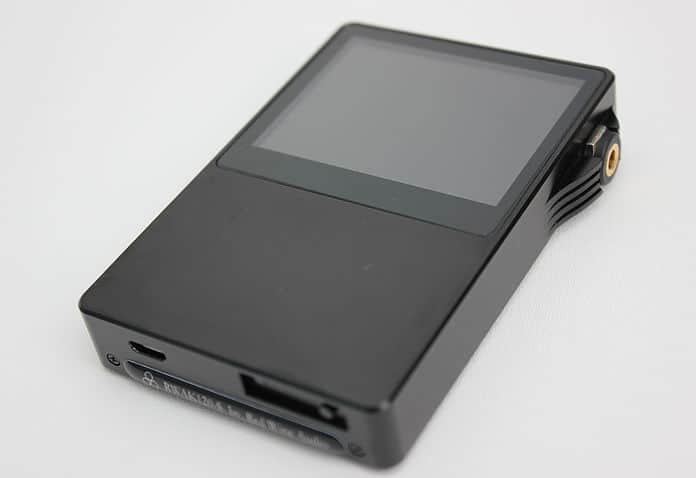
I subjected the modified RWAK120/S to a range of sonic tests using an array of third party equipment and compared it to a stock AK-120 in each case.
Listening to CD quality, 16bit/44.1kHz, music was very interesting on the Red Wine RWAK120-S but more for what it didn’t provide to the ear. I was expecting major fireworks and ear-popping transitions when I first played the newly modded device. Certainly, with the test WAV files, I never experienced that. The actual improvements eased into my consciousness.
Beginning with vocal jazz on the Red Wine machine and a WAV version of Carol Kidd’s How Deep Is The Ocean via Dreamsville [Linn], Kidd’s vocal delivered a precise and concise lyric that scored over the original AK120 by losing elements of blur and bloom around the upper mids. On the Red Wine device, Kidd enunciated instead of merely projecting. Her words were savoured during this slow tempo standard giving, on the modded machine, a more thoughtful projection of the emotions behind them. The enhanced clarity of the Red Wine device also told in the interpretation on the song from Kidd. You could almost hear her facial expressions as she placed emphasis upon individual sections of the song.
Notice, that there are quite a lot of improvements listed here, and that’s just for the vocal section. Yet, none of them were immediately apparent. All eased into the brain after a couple of minutes of sound testing. Such was the relaxed manner of the RWAK120/S itself. It performed as if it had nothing to prove and never imposed itself upon the ear. On the contrary, it asked the ear to come to it.
Kidd’s sparse backing accompaniment allowed the Red Wine to focus on individual instruments that proved useful for the review. The acoustic guitar, for example, was better balanced within the ensemble, during the Kidd vocal. Yes, it provided a successful rhythm backing but the intricacy of the guitar picking was more apparent on the Red Wine machine, which now sounded far busier.
Specifically, it was easier to discern the fingers moving along the strings of the guitar. When manoeuvred forward towards a solo, it successfully blended both the power of the plucked string with the precision of the same and the delicacy of the tonal decay.
The piano was symbolic of the entire performance, in fact, because it showed how much distortion the Red Wine modification was removing. The amount of extra air and space afforded to the Red Wine-induced piano was palpable, allowing the piano to be at ease in its presentation and to provide a flow to the performance that was previously rather stilted.
Percussion was similarly freed from the distortive constriction. Treble-infused cymbals were allowed to decay over a far longer period, for example.
HI-RES STRAITS
Moving to Dire Straits’ Brothers In Arms from the album of the same name via a 24bit/88.2kHz FLAC (Warners). If anything, the differences between the standard and Red Wine AK120s were starker. The latter allowing the music to soar readily and with less constriction. Right from the off, the Hammond organ, which is a signature portion of the introduction was, if anything, more aggressive in its make-up, specifically during the actual key presses which appeared to crunch into place with a new deliberation. As soon as Mark Knopfler’s vocal began, the sense of clarity was tangible. For the first time, I could discern what he was singing about. With the standard AK120, I was convinced that the lyric ran, ‘These mist covered mountains/Are a home now for me/But my home is the lonely’. It was only after playing the Red Wine mod when I realised that the latter, in fact, ran, ‘But my home is the lowlands’.
Knopfler’s iconic Les Paul Gibson lead guitar appears in the song almost as a co-vocal, providing texture and emotion. Via the RWAK120-S, the guitar sounded much cleaner and smoother in its presentation that drew the ear to the enhanced reverb and decay. The removal of distortive elements also illuminated the layered effect of the arrangement which meant that the guitar was often matched with both the Hammond and two synth lines and that blended successfully while retaining their individual personalities at all times.
Assuming a similar position, the bass was clean, punchy and crisp without any smudging or bloom. In fact, percussive bass formed an effective punctuation to the song.
IT’S A CLASSIC-AL
Taking a classical turn and the 24bit/192kHz of Mozart’s Sonata in D major, K.576 Adagio by Gottleib Wallisch. This piece for solo piano provides a major test for any piece of hi-fi equipment. It’s combination of complex notational interplay, use of silence and innate multiplicity of sonic elements is a minefield of potential problems. One of the more interesting, if less obvious, aspects of this track is an early sequence of, to be less than subtle, forceful key bashing which creates definite wooden thuds as the keys are repeatedly, well, hammered, on to the piano frame. This sequence is well recorded on the basic AK120 but, on the Red Wine mod, the thud actually takes on a slight tonal quality of its own as the tone is reflected into the ‘dead’ wood under the key actually changing in pitch as the keys are hit.
In general terms, the lack of harmful distortive effects allows the Red Wine piano far more space and elbow room, giving a sweep and delicacy to the entire arrangement while the reverb, which can be slightly ham-fisted on the original AK120, is stylishly elongated with delicate filigree-like additions to the periphery of the reverb. In short, more detail is allowed to hit the ear because of the lowering of the distortion.
NOW DSD
Finally, the DSD version of The Pixies’ ‘Where Is My Mind’ was played while attaching the AK120 to my reference hi-fi. In this way, I could provide a true, A-B comparison with the original model as no third party headphone amp would be ‘in the way’.
The Pixies are an interesting case for any reviewer. Talking to Mobile Fidelity, during that company’s reissue contract with the band during which the label issued the group’s back catalogue via an exquisite array of 180gm vinyl issues, the label informed me that The Pixies wanted to retain the digital ‘feel’ of their work. The original albums were not recorded onto analogue tape but mastered with and recorded on early digital equipment. The vinyl, said the band, should reflect that. One slip from the comparatively limited master can – and has, with other releases – produced a compress mess. Similarly, the DSD had to follow a similar presentation style. Getting the best from such a DSD is, therefore, a challenge for any mobile player. It has to be on top form.
Listening to the newly modded Red Wine AK120, in all its glory, via my reference hi-fi was, it has to be said, an immediate a revelation. The entire track sounded as though it had lost levels of compression and peak limiting, such was the open and airy nature of the Pixies in full flow.
Firstly, the soundstage increased in height with a fullness that gave the necessary bulk to the Frank Black vocal. His delivery was now more nuanced and subtle in tone, providing greater potential and, above all, threat.
The lead guitar was not the racket heard on the original AK120. Now, you could discern a greater degree of technique and added complexity while the percussion reached out towards the ear, providing both focus and intricacy. Before, the drums provided an unfocussed slam, now the Red Wine modification displayed a conglomeration of actions and reactions the gave the percussion section of the song new interest, broadening the entire track and enhancing its power.
The beautifully textured acoustic guitar strum that flavours the entire track was always an impressive textural show via the AK120. Now, via the Red Wine mod, the acoustic became more a group of guitar strings flying in close formation. An acoustic harmony of individual filaments that enriched the song while the treble-rich cymbals, even via this master, actually sounded like cymbals: praise indeed.
Modifications, such as this AK120 example, are an essential part of the hi-fi firmament, fulfilling needs and requirements of hi-fi enthusiasts that commercial companies often cannot and sometimes will not produce. Red Wine Audio therefore fills a very real gap in the market.
As such, the RWAK120/S is a triumph of engineering and application. A practical result of true passion, anyone who owns or is thinking of buying an original AK-120 would be a fool to not seriously consider upgrading to what is, undoubtedly, the pinnacle of AK-120 performance.
Web: redwineaudio.com
Email: [email protected]
RATING: 8
BONUS CONTENT
EVER READY
From its earliest days in design and manufacturing, Red Wine Audio has made great strides while retaining an underlying power theme. That’s because Red Wine Audio focus primarily on battery power, “Since we started in 2005 we’ve been mainly focused on battery-powered playback,” said Rossi. “For our own products, we run them off the grid at high current with Lithium-ion phosphate battery packs which avoids having to use any AC/DC conversion because battery power is natively DC.
“Every other audio component does an AC/DC conversion somewhere on the outside or inside via the external power adaptor or internal power supply. Even if you have a perfect AC signal coming in that was perfectly generated there is still noise and other issues while converting from AC to DC. It’s much harder to get super clean DC unless you have a properly implemented battery.”
THE LINE-OUT
Astell & Kern does allow you to plug an external headphone amp into the headphone socket and, yes, the volume on the socket is maxed out to 100% but the socket does not become a true line-out socket. The signal still runs through the headphone amp stage, “With my line out mod that exits where the volume wheel used to be,” said Rossi, “it is a true line-out socket. At no time does it pass through the headphone stage. It’s taken at the output of the DAC’s analogue output stage. In this way, because you are bypassing the headphone stage, you’re also getting a cleaner signal and better performance. You want your headphone amp volume control, which is done in the analogue domain, to be the only volume. You don’t want to have to tackle two volume controls and two headphones amps on the same chain.”
THE B MOD
Also available from Red Wine Audio is the RWAK120/B. Essentially the same as the ‘S’ upgrade, the jack on the side of the AK-120 chassis is a true balanced output because the Wolfson 8741 DAC chip outputs a true balanced output, natively. From there, you either convert it to single-ended output or leave it and run in its natural, balanced form.
THE RWAK-120/B
For the B mod – The headphone jack becomes a single-ended line out as you have now but on the side we put a 4-conductor balanced out for a balanced headphone amp such as the Ray Samuels SR-71B or ALO RX3B then you can do a straight balanced feed.


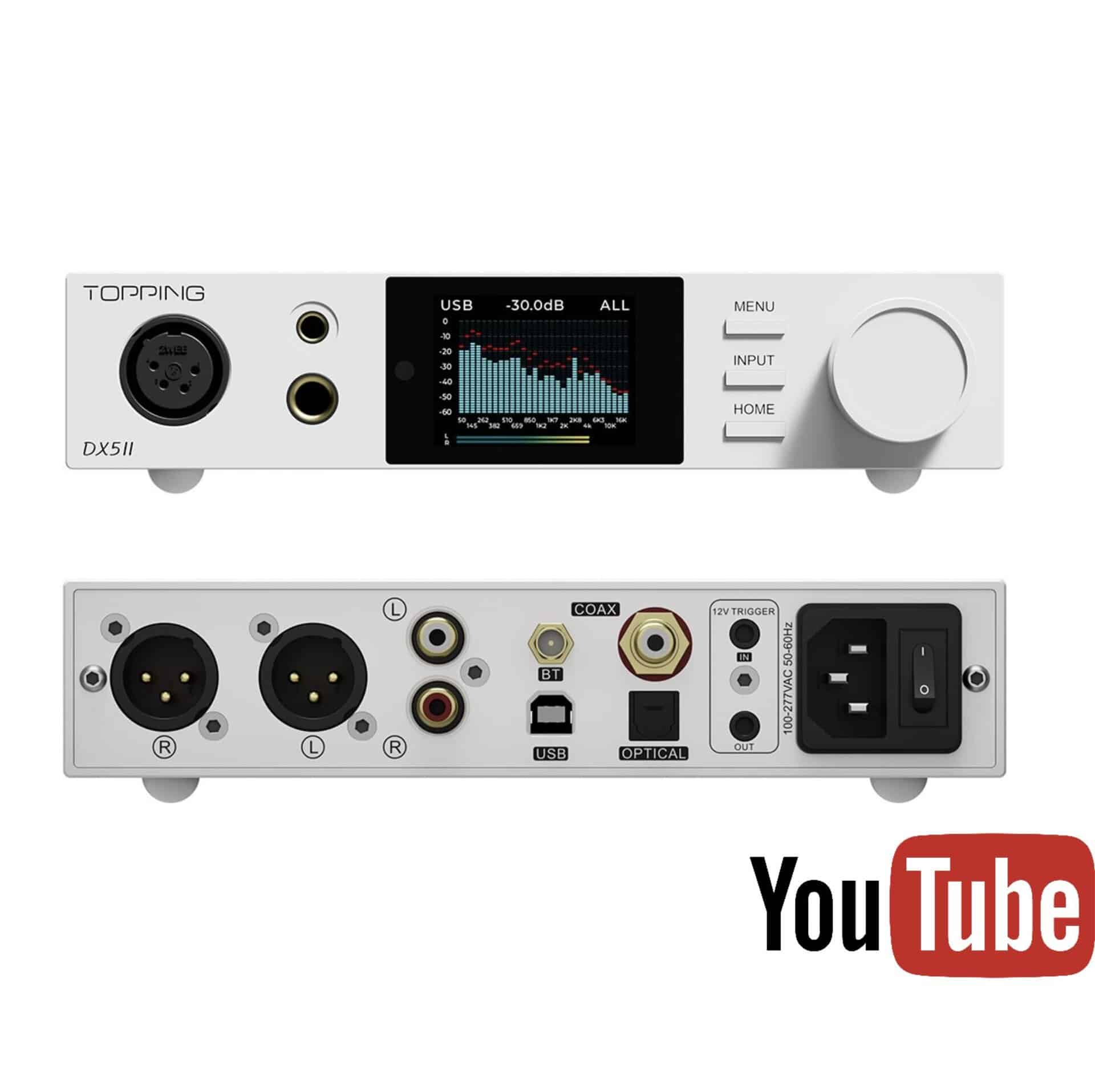
Grazie per la prova. Vorrei proprio scquistare un AK 120 per sostituire il mio Fiio X 5 iii dal buon suono ma con un software demenziale.
Ma dovr posso acquistare il RWAK 120 da Milano? E quanto costerebbe?
Grazie di nuovo
Non credo che l’AK120 sia venduto ora. Penso che sia stato cancellato. Ci sono molte altre scelte l√† fuori, tuttavia,
Grazie per la risposta. Puoi indicarmi qualche alternativa ?
Grazie
Hai una cifra di bilancio?